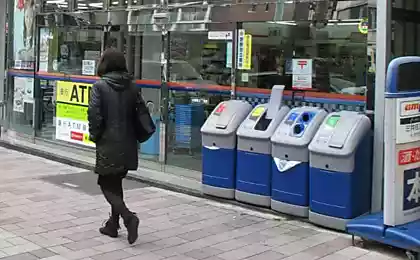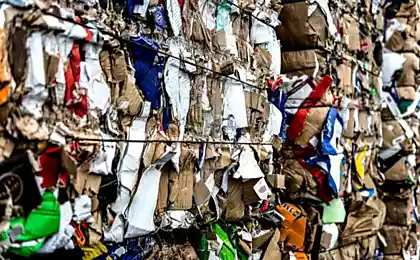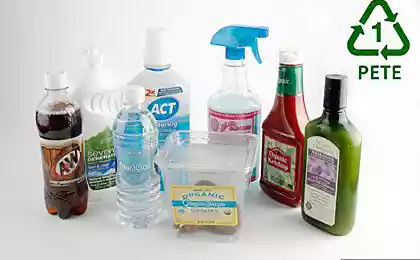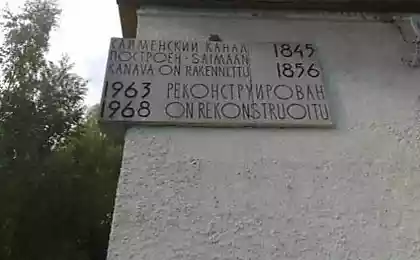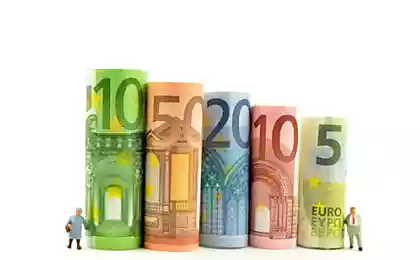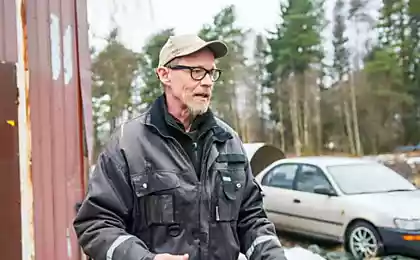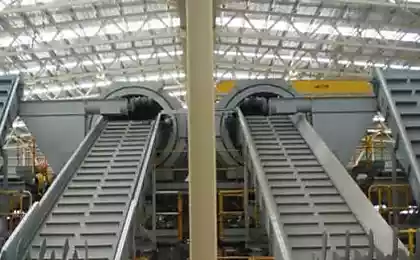564
10 interesting facts about waste management in Finland
That the Finns do with garbage, said Timo seppälä, expert on hazardous waste from the environment Institute of Finland.
1. Organic waste in Finland is definitely going to composting and not burned like in some other countries. Such a decision, the Finns adopted in early 2016.
2. In the Helsinki region there are four major points of reception of waste, where they bring including hazardous waste: expired pesticides, paints and solvents, engine oil, energy saving lamps, home appliances and electronics, etc. waste Such as paper, cardboard, glass, wood, and mixed construction debris are accepted here for the money, but hazardous waste can be taken free of charge — this is done to ensure that they were not included in the total of MSW.

Moving cars whose drivers are unloaded into containers, cartons, old refrigerators, stoves, cans of oil. Was seen even old phone with a round disc.
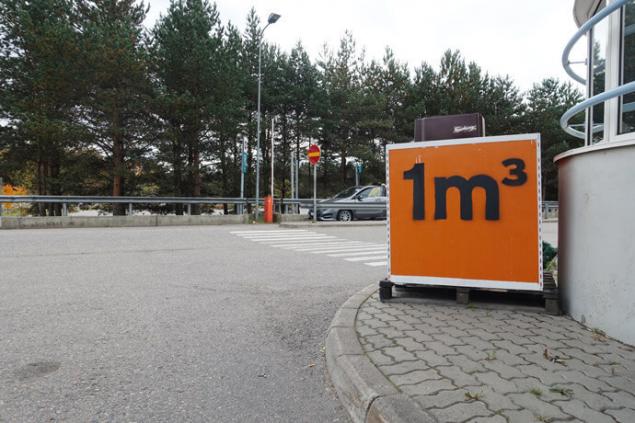
To pass one cubic meter of mixed waste, you need to pay 5 euros
3. Old appliances and electronics take not only the collection points of hazardous waste, but the shops that sell equipment. In the item price already included its collateral value, due to which the process is organized utilization and disposal of equipment. The society of manufacturers and importers of household appliances and electronics regularly conducts tenders and chooses the company which is engaged in disposal of e-wastes and their disposal.

4. Hazardous waste is collected in hundreds of locations across the capital region. For example, gas stations. All stationary points of reception of waste in Finland, including the Helsinki region, indicated on the map kierratys.info. Even have a mobile app HSY Jäteopas, which you can also find the nearest point of reception.
If you see in Helsinki cute containers turquoise, know is point of reception of hazardous waste.
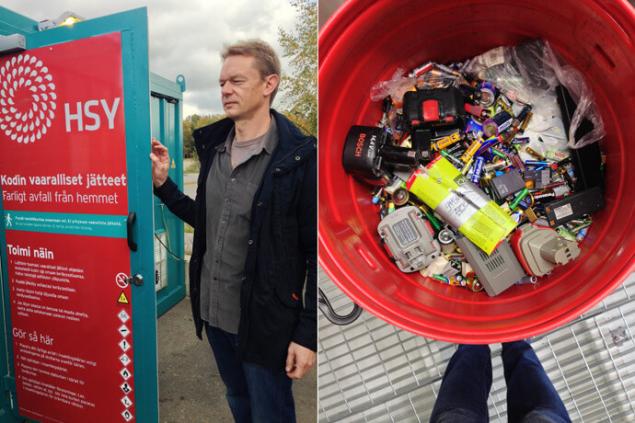
5. Expired medications, the Finns bring to the pharmacy in special boxes, and used syringes are sent for incineration as hazardous waste. In Finland, there a plant for the incineration of hazardous waste, launched in 1984.
6. Finns try not to landfilling, thereby reducing the emissions of methane affecting the climate change. In the mid-1990s in Finland was 400 dumps, and every day something was burning. Now in the country there are only 70 traditional dumps, and once they did there were a thousand. By the way, on existing landfills Finns are practicing the recovery of the methane. For example, at the dump near the city of Porvoo, the methane is either burned or used to produce energy.
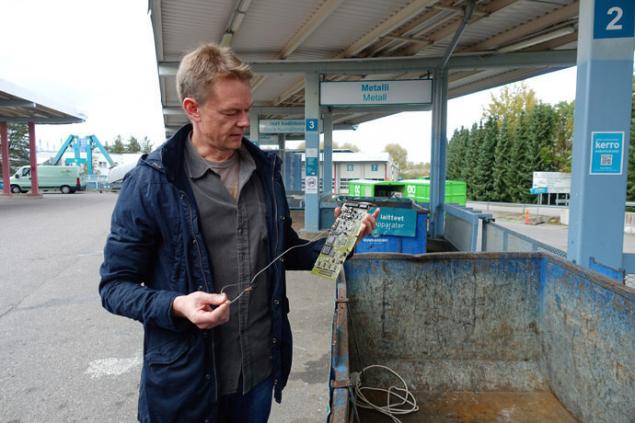
7. Half of the waste in the Helsinki region (50%) are mixed — this is sent to the plant for combustion and production of heat and electricity (waste-to-energy). Mixed waste includes all types of plastic, disposable diapers, tampons and sanitary pads, textiles and shoes, natural and artificial leather, rubber, porcelain and ceramics, dust, incandescent lamps, halogen lamps, cigarette butts.
22% of all waste accounts for paper and 5% cardboard. Bio-waste amounts to 7% of the total mass at 3% for glass, metal and hazardous waste, electronics and appliances — 1%, other — 6%.8. Residents enter into a contract on the export of mixed waste. Other separately collected waste homeowners must take in the nearest points of reception, or to order the removal to a specialized company. Residents of private houses, entering into a contract with the company, exporting waste, determine the regularity of export, depending on the speed of debris. If the person lives alone, it can come once in two weeks. Quite another family of four with young children.
If in a low-rise building at least 10 apartments, they are obliged to organize the collection of bio-waste and cardboard in the local area. Houses in which more than 20 apartments, besides required to collect glass and metal.
9. The Finns have set a goal to gradually reduce the amount of mixed waste — and this despite the country's installations for the incineration of garbage. They are interested in processing all the possible fractions. Actually, including and for this reason they refused the incineration of organic waste.

Waste oil for vehicles poured into such a container are then cleaned, after which they can be used again
10. If you collect aluminum, copper and glass from fluorescent lamps that pass the points of reception of waste per year, enough to make insulation, including insulation glass wool, 900 households.
From what I learned during the trip, I was most surprised by the amount of debris, which in Finland is sent for incineration, — half of all waste. For some reason I thought that Finns are more processed than burn. Pleased that Finland strives to reduce the amount of waste incinerated, and that the organic Finns are necessarily sent for recycling. We definitely have a lot to learn from neighbors.
P. S. And remember, only by changing their consumption — together we change the world! ©
Source: www.imorganic.ru/waste-finland-facts/
1. Organic waste in Finland is definitely going to composting and not burned like in some other countries. Such a decision, the Finns adopted in early 2016.
2. In the Helsinki region there are four major points of reception of waste, where they bring including hazardous waste: expired pesticides, paints and solvents, engine oil, energy saving lamps, home appliances and electronics, etc. waste Such as paper, cardboard, glass, wood, and mixed construction debris are accepted here for the money, but hazardous waste can be taken free of charge — this is done to ensure that they were not included in the total of MSW.

Moving cars whose drivers are unloaded into containers, cartons, old refrigerators, stoves, cans of oil. Was seen even old phone with a round disc.

To pass one cubic meter of mixed waste, you need to pay 5 euros
3. Old appliances and electronics take not only the collection points of hazardous waste, but the shops that sell equipment. In the item price already included its collateral value, due to which the process is organized utilization and disposal of equipment. The society of manufacturers and importers of household appliances and electronics regularly conducts tenders and chooses the company which is engaged in disposal of e-wastes and their disposal.

4. Hazardous waste is collected in hundreds of locations across the capital region. For example, gas stations. All stationary points of reception of waste in Finland, including the Helsinki region, indicated on the map kierratys.info. Even have a mobile app HSY Jäteopas, which you can also find the nearest point of reception.
If you see in Helsinki cute containers turquoise, know is point of reception of hazardous waste.

5. Expired medications, the Finns bring to the pharmacy in special boxes, and used syringes are sent for incineration as hazardous waste. In Finland, there a plant for the incineration of hazardous waste, launched in 1984.
6. Finns try not to landfilling, thereby reducing the emissions of methane affecting the climate change. In the mid-1990s in Finland was 400 dumps, and every day something was burning. Now in the country there are only 70 traditional dumps, and once they did there were a thousand. By the way, on existing landfills Finns are practicing the recovery of the methane. For example, at the dump near the city of Porvoo, the methane is either burned or used to produce energy.

7. Half of the waste in the Helsinki region (50%) are mixed — this is sent to the plant for combustion and production of heat and electricity (waste-to-energy). Mixed waste includes all types of plastic, disposable diapers, tampons and sanitary pads, textiles and shoes, natural and artificial leather, rubber, porcelain and ceramics, dust, incandescent lamps, halogen lamps, cigarette butts.
22% of all waste accounts for paper and 5% cardboard. Bio-waste amounts to 7% of the total mass at 3% for glass, metal and hazardous waste, electronics and appliances — 1%, other — 6%.8. Residents enter into a contract on the export of mixed waste. Other separately collected waste homeowners must take in the nearest points of reception, or to order the removal to a specialized company. Residents of private houses, entering into a contract with the company, exporting waste, determine the regularity of export, depending on the speed of debris. If the person lives alone, it can come once in two weeks. Quite another family of four with young children.
If in a low-rise building at least 10 apartments, they are obliged to organize the collection of bio-waste and cardboard in the local area. Houses in which more than 20 apartments, besides required to collect glass and metal.
9. The Finns have set a goal to gradually reduce the amount of mixed waste — and this despite the country's installations for the incineration of garbage. They are interested in processing all the possible fractions. Actually, including and for this reason they refused the incineration of organic waste.

Waste oil for vehicles poured into such a container are then cleaned, after which they can be used again
10. If you collect aluminum, copper and glass from fluorescent lamps that pass the points of reception of waste per year, enough to make insulation, including insulation glass wool, 900 households.
From what I learned during the trip, I was most surprised by the amount of debris, which in Finland is sent for incineration, — half of all waste. For some reason I thought that Finns are more processed than burn. Pleased that Finland strives to reduce the amount of waste incinerated, and that the organic Finns are necessarily sent for recycling. We definitely have a lot to learn from neighbors.
P. S. And remember, only by changing their consumption — together we change the world! ©
Source: www.imorganic.ru/waste-finland-facts/

